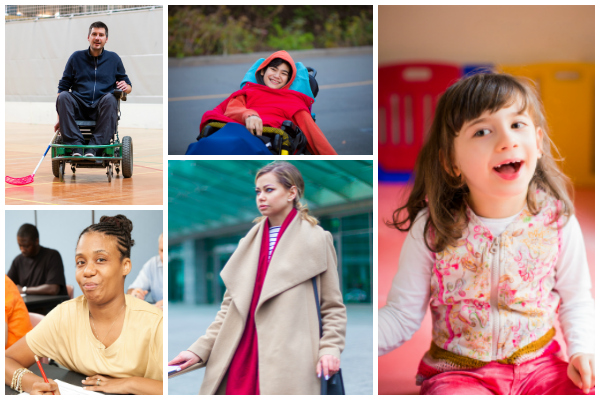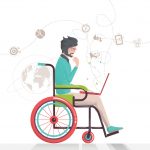March is Cerebral Palsy Awareness Month and we at Inland Regional Center would like to share with you some information about cerebral palsy (CP). Here are 10 things to know about CP.
1. Cerebral palsy is a disability that affects a person’s movement, balance, and posture. Symptoms and severity of CP vary from person to person.
2. Despite being the most common motor disability in children, less than half a percent of children in the United States are diagnosed with CP, per the Centers for Disease Control and Prevention. Cerebral palsy is usually diagnosed during the first two years of life.
3. CP is caused by damage to the developing brain or abnormal brain development. These injuries or development issues then affect the person’s ability to control his or her muscles.
4. Most CP is related to brain damage that happened before or during birth. Some cerebral risk factors include being born too early or too small or being born a twin.
5. There are different types of cerebral palsy. The types of movement disorders that can occur are:
-
- spasticity: stiff muscles
- dyskinesia: uncontrolled movements
- ataxia: poor coordination/balance
6. Treatments for CP can include physical therapy, occupational therapy, speech therapy, oral medication, and surgery. People with cerebral palsy can also use assistive devices and technology like wheelchairs, canes, walkers, home modifications, and communication devices.
7. About sixteen percent of Inland Regional Center clients have a diagnosis of cerebral palsy. The number of IRC clients with a CP diagnosis was 1,205 in the 2018/19 fiscal year.
8. Children and adults with CP play a vital role in our communities. Having the right services and supports help people with cerebral palsy live healthier, active lives. Service plans for IRC clients are individualized to meet individual needs and goals. Transportation, In-home respite, and supported living services are Common Services for IRC clients with CP.
9. People with cerebral palsy deserve to be treated with dignity and respect. It is important to understand disability etiquette! Examples include not touching a person’s assistive devices, asking before providing assistance, and communicating directly with the person with the disability, not their companion.
10. Mental Health within the CP community was recently studied by researchers at the University of Michigan. It was found that adults with cerebral palsy were more likely to have a mental health disorder than adults without cerebral palsy. This study highlights the importance of accurate mental health screenings, as well as access to mental health resources for people with CP.
References
Centers for Disease Control and Prevention – What is CP?
Centers for Disease Control and Prevention – Causes and Risk Factors of Cerebral Palsy
Department of Developmental Services – Regional Center Oversight Dashboard
National Institute of Neurological Disorders and Stroke – Cerebral Palsy: Hope Through Research
United Cerebral Palsy – Disability Etiquette
University of Michigan, M Health Lab – Adults with Cerebral Palsy at Increased Risk for Mental Health Conditions
Share this Post





